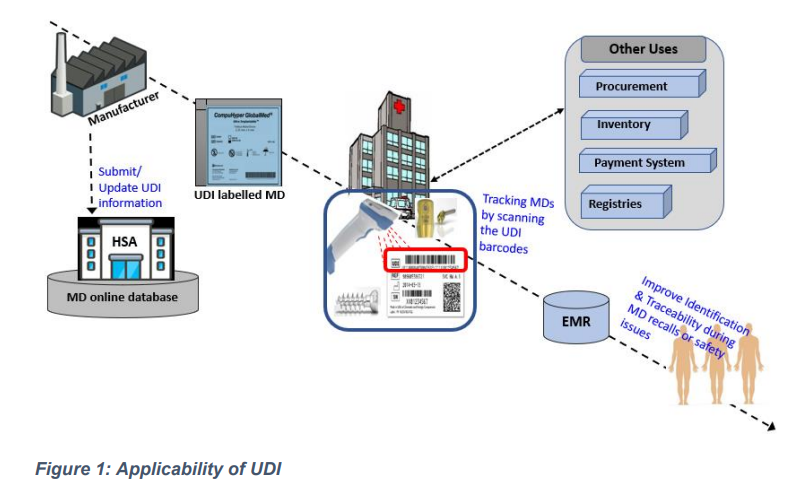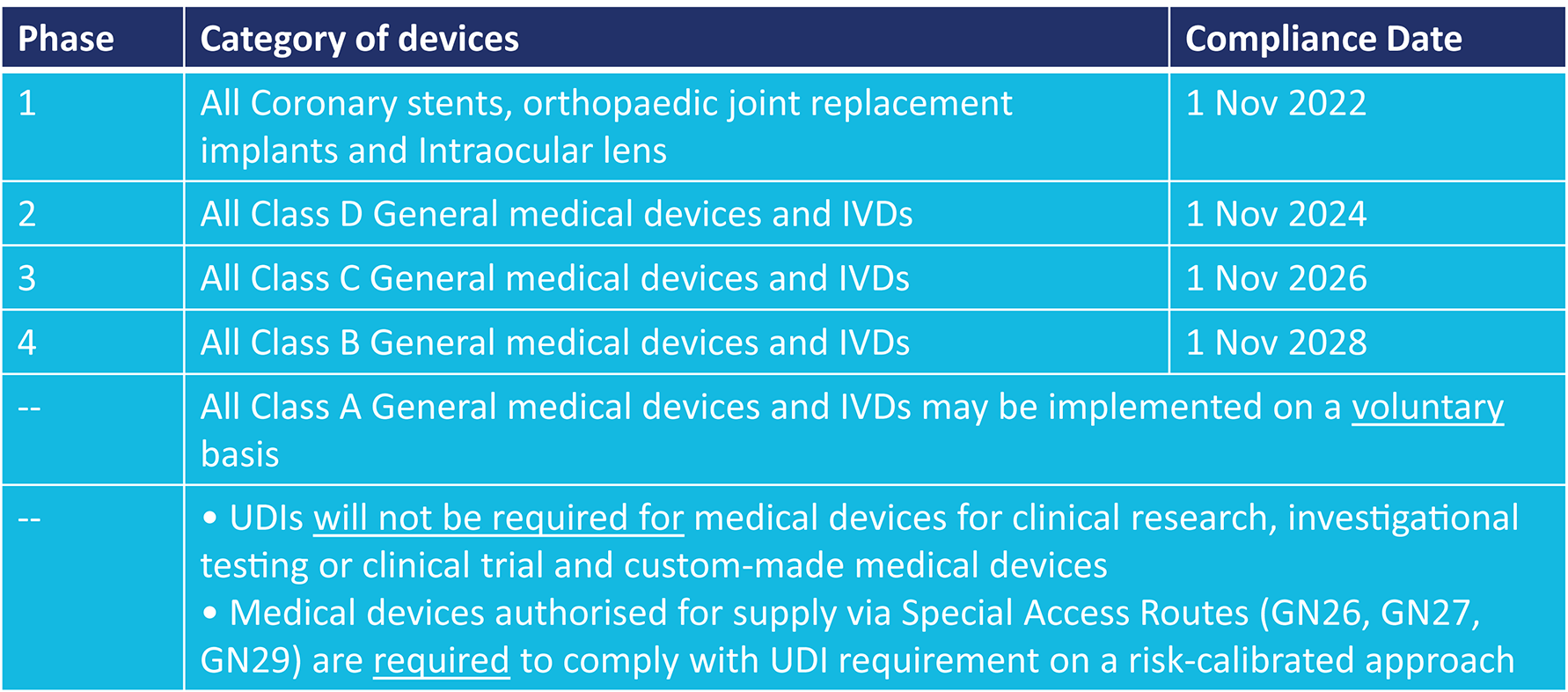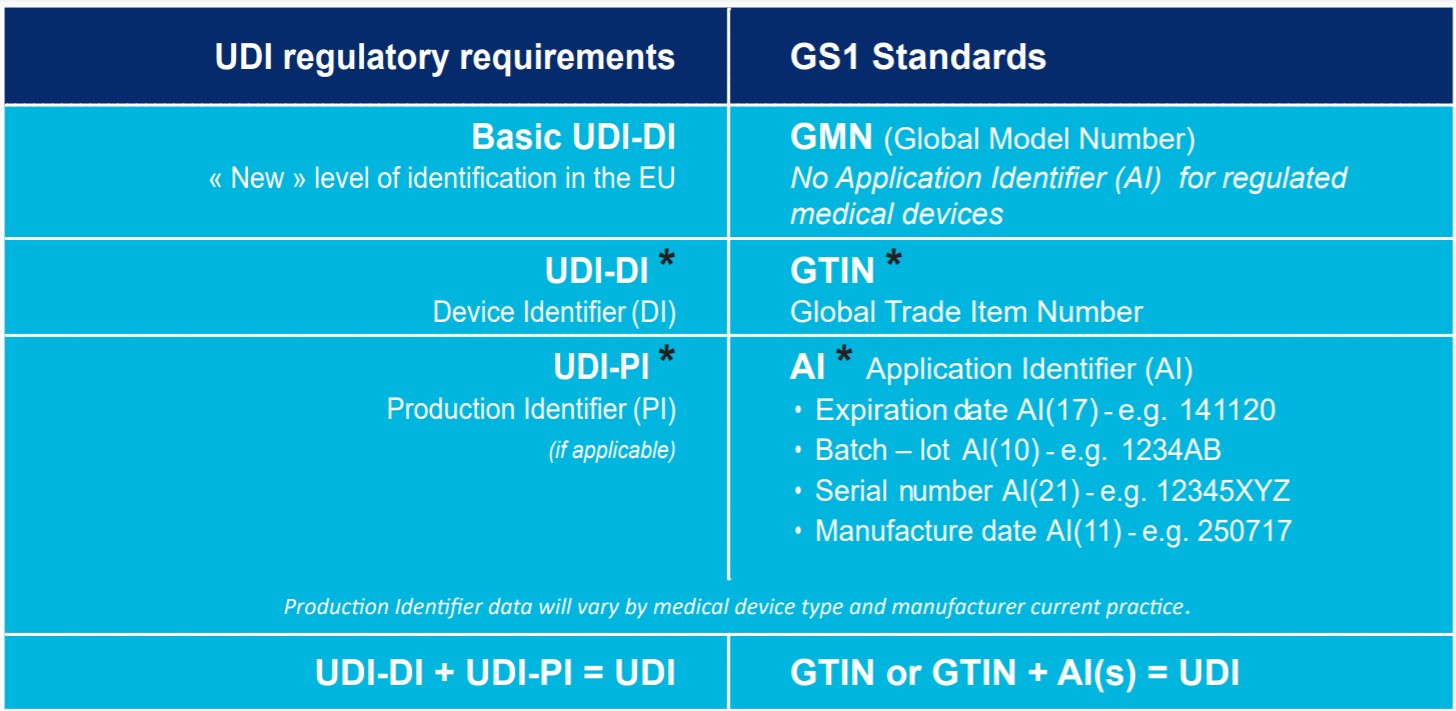HSA UDI Implementation
The purpose of this guidance document is to provide clarity on the regulatory requirements for Unique Device Identification (UDI) implementation in Singapore and the details on the steps to submit UDI information into the Singapore Medical Device Register (SMDR) and Class A Medical Device Database.
Singapore will be adopting the UDI system which is an international system for tracking and identification of medical devices. The fundamental elements of UDI system in Singapore is aligned to the internationally harmonised principles published by the International Medical Device Regulators Forum (IMDRF).
With Unique Device Identification (UDI) system in place, there will be greater efficiency and enhanced patient safety by (Figure 1):
-
Facilitate traceability of medical devices, especially for field safety corrective actions
-
Support identification of medical devices through distribution and use
-
Enable well timed identification of medical devices in adverse events
-
Reducing medical errors
-
Facilitate extensive capturing of data on medical devices

HSA UDI implementation timelines for medical device manufacturers
All class B, C or D medical devices including in vitro diagnostics (IVDs) are required to be registered with HSA on the SMDR, prior to their placement on the Singapore market. Class A medical devices are required to be listed on the Class A medical device database.
The HSA has set up a phased implementation schedule for UDI compliance based on risk-calibrated approach:

Medical devices that are supplied in Singapore after the respective compliance date based on the risk class, are required to comply with UDI requirement unless otherwise specified.
Note: The compliance date for the various phases is tentative and is subject to adjustments based on the progress of the earlier phases of implementation.
Transition period to comply with each Implementation Phase
All medical devices imported into Singapore must be labelled with UDI from the respective HSA UDI compliance dates. However, companies will be given additional 6 months from the compliance date to deplete the respective medical devices that have been imported prior to the compliance date and exist in their current supply chain. For instance, for medical devices that belong to phase 1, all medical devices imported into Singapore from 1 Nov 2022 should be HSA UDI compliant. Any local stocks of these medical devices that were previously imported before 1 Nov 2022, should be supplied before 1 May 2023. From 1 May 2023, any supply of medical devices that are in phase 1 should be HSA UDI compliant.
GS1 is an designated issuing agency
GS1 is accredited as an UDI Issuing Agency/Entity based on many regulations worldwide, in particular US, EU, China, South Korea, Saudi Arabia, meaning that manufacturers supplying regulated medical devices to these markets can use the GS1 standards to implement the UDI requirements.
How to implement UDI with GS1 Standards
The GS1 system of standards provides a global framework to identify, capture and share Healthcare product information, thereby enabling a consistent worldwide implementation of UDI. UDI regulatory requirements have a translation into GS1 standards as shown in the table.

To learn and implement about Unique Device Identification (UDI), please contact GS1 Singapore Healthcare Team at contact@gs1.org.sg or 6826 3082
Reference:
Health Science Authority Regulatory Guidance on Medical Device Unique Device Identification (UDI) System, August 2021